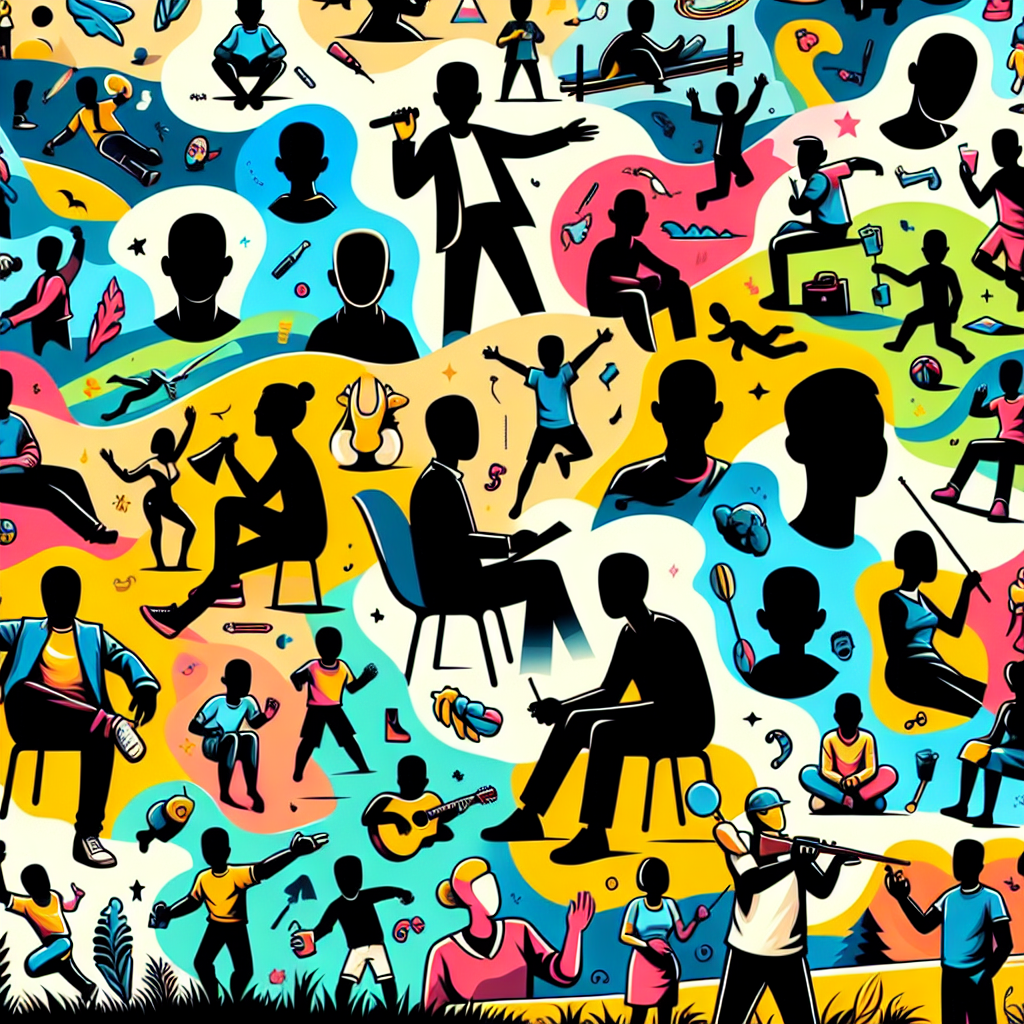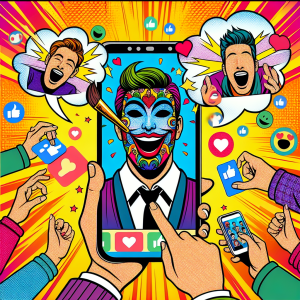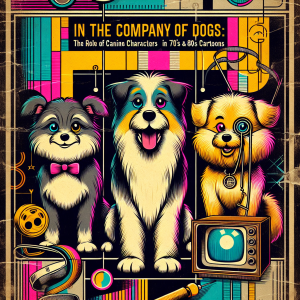Imagine scrolling through your social media feed and stopping mid-scroll at a charming, colorful cartoon showing a lively personality—yet, something feels effortlessly different: the character has no face. Welcome to the world of faceless cartoon conversions! This innovative trend has taken the digital art landscape by storm, blending anonymity with creativity in a delightful, captivating manner. Whether you’re an artist, a content creator, or just a curious observer, there’s a world of interesting insights waiting to unfold.
The Rise of Faceless Cartoons: A New Artistic Expression
Over the past few years, there has been a significant surge in the popularity of faceless cartoon characters. What began as an artistic experiment has evolved into a full-fledged movement. Artists are embracing this unique form of illustration for several reasons. Firstly, faceless cartoons provide a sense of relatability and inclusivity. Viewers can project themselves onto these characters, allowing for a deeper connection to the content. Secondly, devoid of specific features, these characters embrace a universal appeal, making them suitable for diverse audiences.
Why Choose a Faceless Design?
So, why do so many artists and creators opt for faceless character designs? Here are a few compelling reasons:
- Emotional Resonance: A character without a face invites viewers to fill in their own experiences and emotions, enhancing the relatability factor.
- Artistic Freedom: Artists can explore myriad styles and forms without being confined to traditional character designs.
- Timelessness: Faceless cartoons often possess a certain timeless quality, making them adaptable to various themes and contexts.
- Engagement and Interaction: These characters can evoke curiosity and engagement, sparking discussions and interactions among viewers.
Where the Concept Originated
The idea of faceless figures isn’t new; it can be traced back to early animation and art movements. From the iconic “unknown soldier” imagery used in wartime propaganda to modern minimalist designs in advertising, the use of facelessness has often been a strategic choice to evoke feelings of anonymity and universality. In particular, social media platforms have given rise to many artists who showcase their faceless designs, leading to a resurgence of interest in this unique style.
The Artistic Process Behind Faceless Cartoons
Creating a faceless cartoon might seem straightforward, but the process involves thoughtful consideration and creativity. Here’s a glimpse into how artists develop these engaging designs:
1. Conceptualization
The journey begins with brainstorming and sketching ideas. Artists consider the message they want to convey through their character, be it humor, vulnerability, or playfulness.
2. Choice of Color Palette
Color plays a pivotal role in faceless designs. Artists select vibrant hues that express personality and emotion while leaving out facial features. This choice helps in conveying the character’s mood and energy.
3. Body Language
Without facial expressions to rely on, body language becomes the primary communicator. Artists focus on gestures and postures to bring their characters to life, ensuring they can convey emotions without traditional facial characteristics.
4. Accessories and Elements
Adding hats, clothing styles, or props helps establish the character’s identity. These elements become significant identifiers that flesh out the character’s personality.
Applications of Faceless Cartoons
The applications of faceless cartoons are as diverse as their design styles. Some specific areas where these engaging illustrations find their place include:
1. Marketing and Branding
Many brands are utilizing faceless cartoon characters in their marketing strategies. These characters create a friendly and relatable face for the brand, while providing a platform for storytelling. For example, a food delivery service might use a faceless character to illustrate their speedy delivery, making the brand feel accessible and fun.
2. Social Media Content
Digital creators are adopting faceless cartoon designs to enhance their social media presence. Memes, stories, and posts featuring these characters resonate with followers and can help in building a loyal fan base.
3. Educational Tools
Faceless cartoons are also finding a home in educational content. They simplify complex concepts and create engaging visuals that capture attention, making learning more enjoyable for students.
4. Personal Projects and Merchandise
Artists often create faceless characters for personal projects, including merchandise like stickers, t-shirts, and prints. The universal appeal allows these designs to find a market among diverse audiences.
The Emotional Connection of Faceless Characters
One of the most fascinating aspects of faceless cartoons is their ability to evoke emotional connections. By stripping away facial features, artists enable viewers to project their own identity onto the character. This unique bond fosters a greater engagement with the character’s narrative, motivations, and experiences.
Popular Faceless Cartoon Creators
With the rising trend of faceless cartoon conversions, numerous artists have emerged as front-runners in this niche. Here are a few notable creators:
1. Alex Solis
Known for his playful and humorous illustrations, Alex Solis often employs faceless characters to narrate fun stories. His work ranges from social commentary to whimsical designs, all of which invite audience interpretation.
2. Taliah When | @taliahwhen
Taliah combines rich color palettes and minimalist designs to create faceless characters that explore emotions and experiences. Her art often touches on themes of mental health and self-discovery, resonating with many viewers.
3. Extra Peculiar | @extrapeculiar
Extra Peculiar features an array of cute and quirky faceless characters that brighten up social media feeds. Their cheerful vibe and whimsical storytelling create a joyful experience for followers.
How to Create Your Own Faceless Character
Intrigued by the idea of creating your own faceless character? Here’s a step-by-step guide to get you started:
Step 1: Brainstorm
Think about the personality and story of your character. What emotions do you want it to embody? Sketch some rough outlines to visualize your ideas.
Step 2: Select a Color Palette
Choose colors that reflect your character’s personality. For instance, warm colors can convey energy, while cooler tones may express calmness.
Step 3: Focus on Body Language
Create poses and gestures to communicate the character’s emotions. Remember, without facial expressions, the character’s posture is key to conveying its feelings.
Step 4: Add Details
Incorporate distinct outfits, accessories, or props that highlight unique characteristics. These elements can become signature traits of your character.
Step 5: Share Your Creation
Once you’re satisfied with your design, share it on social media! Engage with others who appreciate the creativity behind faceless cartoons.
The Future of Faceless Cartoons
As we move forward, the trend of faceless cartoon conversions is expected to evolve even further. With technological advancements in animation and graphic design, creators can explore more dynamic and intricate faceless characters, expanding their storytelling capabilities.
The fusion of artificial intelligence and art is also paving the way for interactive faceless characters that react to audience input. Imagine a faceless character that adapts its actions and emotions based on viewer feedback; the possibilities are limitless!
Conclusion: Embrace the Faceless Trend
The faceless cartoon movement is more than just a trend; it’s a powerful form of expression that resonates with audiences across cultures and backgrounds. By embracing anonymity in character design, artists create space for connection, engagement, and relatability—qualities that are crucial in today’s fast-paced, digital landscape. So, whether you’re an artist, a content creator, or simply a fan of this charming art form, there’s never been a better time to dive into the world of faceless cartoon conversions.
Frequently Asked Questions (FAQ)
What does it mean to create a faceless cartoon?
A faceless cartoon is an illustration that lacks identifiable facial features. This design choice allows for broader viewer interpretation and emotional connection.
Why are faceless cartoons becoming popular?
The rise in popularity can be attributed to their relatability, artistic freedom, and ability to create universal appeal among diverse audiences.
Can anyone create faceless cartoon characters?
Absolutely! Anyone can create faceless cartoon characters. With a bit of creativity and practice, you can develop your own unique designs.
Where can I share my faceless cartoon creations?
You can share your faceless cartoon artworks on social media platforms like Instagram, Twitter, and TikTok or art communities such as DeviantArt and Behance.
Are there any tools to help create faceless cartoons?
Yes! Various graphics software, like Adobe Illustrator, Procreate, and online platforms like Canva, can assist you in designing faceless cartoons.








+ There are no comments
Add yours